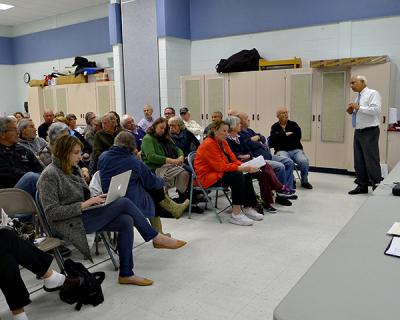Springs School Board Hires Superintendent Full Time
Springs School Board Hires Superintendent Full Time

A new contract for the Springs School's superintendent makes his position full time and extends his tenure with the district through July of 2018.
The Springs School Board on Monday unanimously approved that new contract for John J. Finello. He first joined the district as a part-time superintendent in September of 2013.
Mr. Finello will earn a base salary of $215,000, will receive a stipend for a cellphone, and will purchase a house in Springs to be able to live in the district, according to a summary of the contract provided by the school board. Mr. Finello had previously been given a monthly stipend of $3,000 for rental housing in East Hampton; he will no longer receive that stipend.
John Grant, the school board vice president, explained during Monday's meeting that it was always the board's intention to negotiate a full-time contract with Mr. Finello.
"Initially we were planning on having Jay full time this year . . . but that did not come to pass. This is just a continuation of our strategy," Mr. Grant said. "There was a search process previously, but that was kind of on hold until Jay could definitely commit to three years and become a resident of the area. This has been an ongoing process. We're trying to keep Jay here."
Prior to coming to Springs in 2013, Mr. Finello was the interim superintendent in East Islip schools for two years. Before that, he spent 39 years in the Huntington School District, where he began as a teacher and rose through the ranks to eventually become its superintendent.
Eric Casale, who is in his tenth year as principal in Springs, said he is excited that Mr. Finello was interested in extending his stay in Springs.
"It's nice to know you're going to have stability at the superintendent level for the next several years," Mr. Casale said. "As a building principal, it's very comforting to have that stability. You build a relationship with somebody and it's rewarding to know that relationship will continue."






